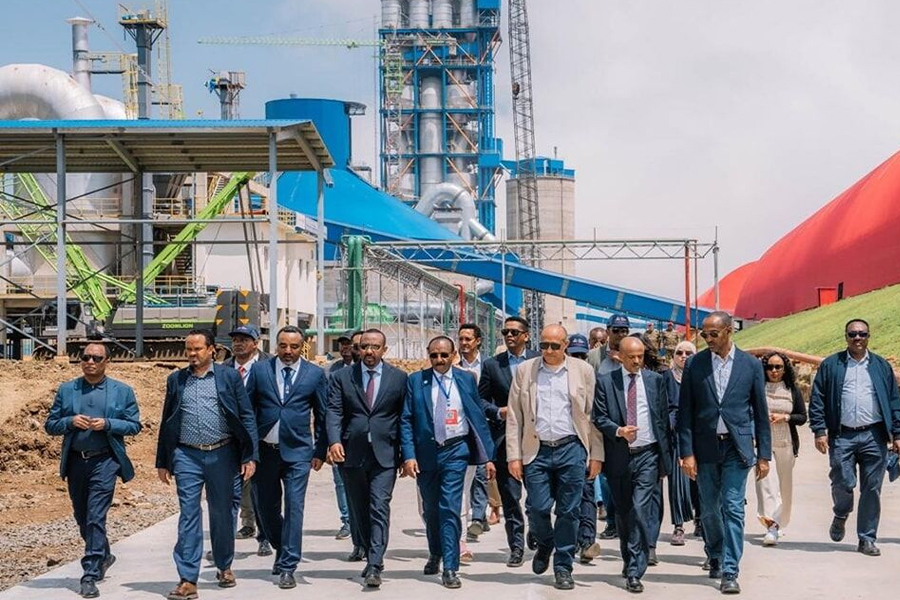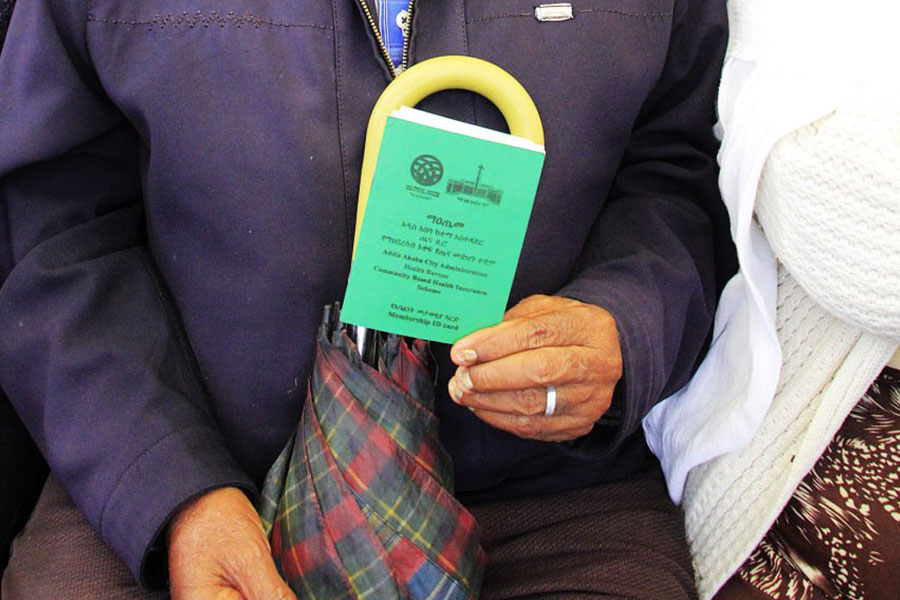
Radar | Sep 29,2024
Jul 27 , 2024
By John W. McArthur , Zia Khan
It is a truism in the business world that vision without execution is a hallucination, and execution without vision is futile. The same principle applies to global policy: ambitions without solutions are just hopes, while solutions without ambition lead to stagnation.
The Sustainable Development Goals (SDGs) for 2030 are a case in point. All United Nations member states unanimously adopted these 17 objectives and 169 underlying targets in 2015. They constitute an ambitious agenda to address global challenges like poverty, health, gender equality, labour, education, and climate change. With six years remaining until the deadline, the world is far from achieving most of these goals. Despite significant improvements in some areas – such as a million more children reaching their fifth birthday each year – progress has been too slow in many others.
While financing gaps are rightly often cited as a key factor, the biggest obstacle to achieving the SDGs is the lack of systematic approaches to creating scalable solutions. Slow and steady gains can lead to significant advances over time, but if progress becomes too slow, the sense of achievement and hope for the future can dissipate. Achieving systemic gains requires boldness.
In 2015, the SDGs were launched with a call for transformation. But calling for transformative solutions is easier than developing them. Although markets are powerful drivers of innovation, we need solutions capable of tackling broader public interests. Progress often requires new forms of collaboration between public, private, scientific, and civil society institutions or even the creation of new ones. But, many organisations have difficulties updating their goals or building partnership strategies.
Siloed professional communities are difficult to unite, leaving vested interests and the forces of inertia to crowd out innovation. Consequently, partnership remains more an aspirational value than a skills-based discipline, and policy debates often prioritise ideology over practical solutions.
Against this backdrop, achieving the SDGs by 2030 requires new approaches that are audacious enough to inspire but also practical enough to be viable – concepts that capture the imagination while steering implementation debates toward tangible results. This could mean anything from a new global fund designed to ensure that digital cash transfers reach the world’s poorest communities, or an "interspecies money" mechanism that leverages artificial intelligence to provide animals with a say on how digital currencies can be spent on their protection.
It could also mean developing a public data tool to help investors identify and avoid companies that use forced labour.
New technologies, institutions, and approaches all have the capacity to mobilise energy and expertise to achieve common, quantifiable objectives. Crucially, the fresh approaches we have in mind must convince people to abandon current practices and pool their creativity and resources toward a greater goal.
But big ideas rarely emerge on their own. Our respective professional experiences and collaborative efforts have taught us that innovative SDG solutions must be encouraged, cultivated, and supported. As co-chairs of 17 Rooms, a partnership between the Brookings Institution and The Rockefeller Foundation, we have worked with several dozen groups of extraordinary professionals around the world on initiatives related to all 17 goals.
Watching them experiment with various approaches taught us a few lessons about driving positive change.
Venues for cross-sector cooperation on sustainable development remain too rare. We have been struck by the sense of novelty leaders from all sectors frequently express when encouraged to craft bold actions together to achieve even individual SDG targets. How ideas are shaped matters. To create platforms for the best ideas to emerge, the world needs tools, processes, and systems that can bring together diverse views, and yet the lack of available tools for developing multi-stakeholder solutions is startling.
The development and adoption of big ideas should be interlinked. Too often, experts devise new solutions without understanding the realities faced by those responsible for implementing them. Conversely, policymakers often fail to seek out innovative ideas and are rarely held accountable for not doing so. Another lesson concerns the need to determine early on who will pay and how. Regrettably, the SDGs were launched without sufficient agreement on funding, making even small amounts of money difficult to secure.
Without adequate financing, big ideas will remain just that – ideas.
There is no substitute for leadership. Institutions and systems are crucial for large-scale deployment, but the passion and dedication of individuals championing big ideas are much more important than a perfect strategy or project. Since roadblocks are inevitable in an age of technological disruption, policy entrepreneurs must be as agile as their counterparts in the business world in navigating constantly shifting terrain.
To be sure, some may argue that the current geopolitical climate makes it too challenging to pursue big ideas or develop systematic approaches to achieving the SDGs. We disagree. If anything, today’s heightened tensions emphasise the need to chart a better path forward. Policy tweaks are unlikely to have a significant impact when the world seems stuck or off course. New ideas, on the other hand, can foster a sense of opportunity and combat despair.
Private-sector and civil society leaders are as vital to generating big ideas as public officials. Big ideas can drive change at every level, from local councils to international forums. But, achieving the SDGs requires new platforms to encourage innovation across sectors and empower relevant actors to independently advance solutions.
At 17 Rooms, we have learned from our successes and missed opportunities. With six years remaining until the deadline to achieve the SDGs, we are actively seeking big ideas. We hope others will adopt a similar approach and help us build platforms to facilitate innovative solutions.
PUBLISHED ON
Jul 27,2024 [ VOL
25 , NO
1265]

Radar | Sep 29,2024

Featured | Sep 13,2022

Commentaries | Jul 23,2022

Viewpoints | Sep 10,2023

Agenda | Jun 08,2025

Delicate Number | May 24,2025

Radar |

Fortune News | Dec 21,2022

My Opinion | Dec 30,2023

Viewpoints | May 18,2024

Photo Gallery | 177046 Views | May 06,2019

Photo Gallery | 167260 Views | Apr 26,2019

Photo Gallery | 157857 Views | Oct 06,2021

My Opinion | 136950 Views | Aug 14,2021

Dec 22 , 2024 . By TIZITA SHEWAFERAW
Charged with transforming colossal state-owned enterprises into modern and competitiv...

Aug 18 , 2024 . By AKSAH ITALO
Although predictable Yonas Zerihun's job in the ride-hailing service is not immune to...

Jul 28 , 2024 . By TIZITA SHEWAFERAW
Unhabitual, perhaps too many, Samuel Gebreyohannes, 38, used to occasionally enjoy a couple of beers at breakfast. However, he recently swit...

Jul 13 , 2024 . By AKSAH ITALO
Investors who rely on tractors, trucks, and field vehicles for commuting, transporting commodities, and f...

Oct 18 , 2025
The political establishment, notably the ruling party and its top brass, has become p...

Oct 11 , 2025
Ladislas Farago, a roving Associated Press (AP) correspondent, arrived in Ethiopia in...

Oct 4 , 2025
Eyob Tekalegn (PhD) had been in the Governor's chair for only weeks when, on Septembe...

Sep 27 , 2025
Four years into an experiment with “shock therapy” in education, the national moo...

Oct 18 , 2025 . By NAHOM AYELE
In a sweeping reform that upends nearly a decade of uniform health insurance contribu...

A bill that could transform the nutritional state sits in a limbo, even as the countr...

Oct 18 , 2025 . By SURAFEL MULUGETA
A long-planned directive to curb carbon emissions from fossil-fuel-powered vehicles h...

Oct 18 , 2025 . By BEZAWIT HULUAGER
Transaction advisors working with companies that hold over a quarter of a billion Bir...